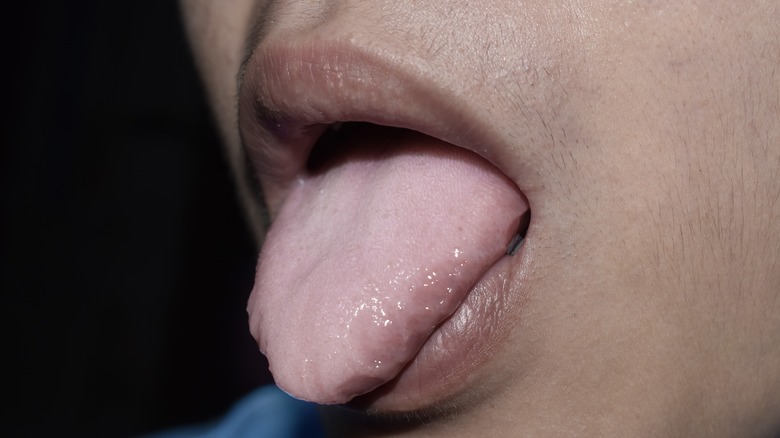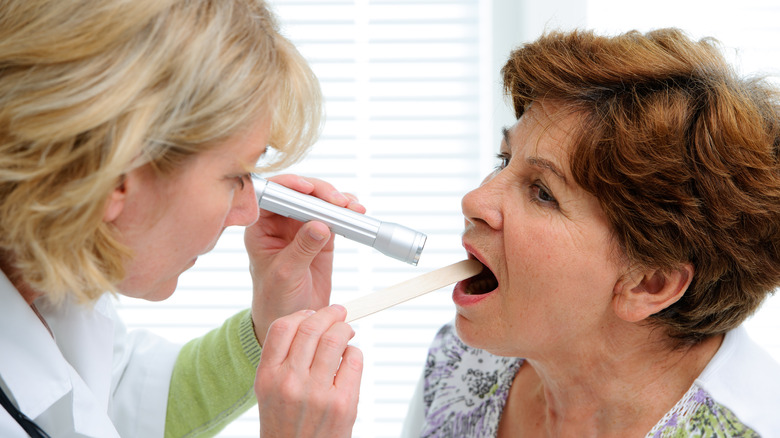What Does It Mean If Your Tongue Is Pale?
Essential for speech and digestion, the tongue is firmly rooted in our mouth and isn't going anywhere (via WebMD). A combination of tough and moist tissue connects the front portion of the tongue to the mouth. Meanwhile, the back of the tongue is attached to a horseshoe-shaped bone known as the hyoid bone, which sits where the jaw and the neck intersect (via StatPearls).
While no tongue looks exactly like another, a healthy tongue will appear pink in color, of medium thickness, and the surface will be clear of cracks or sores, according to Bonham Dental Arts. Any variations in color are usually minimal, such as the presence of a thin, white film across the tongue. Tongues with severe discoloration such as yellow, black, purple, or gray can be a sign of an underlying health condition — but what about a pale tongue? Is pale close enough to pink to still be considered healthy? Because the tongue receives a significant amount of blood flow (per Health Direct), it may be able to tell us a great deal about our circulatory health, according to Mindbodygreen.
What a pale tongue may tell us about our blood flow
According to 2016 research published in BMC Complementary Medicine and Therapies, tongue coloration is one factor used in traditional Chinese medicinal practices to detect blood stasis in patients, or poor blood circulation known as blood stasis (per ScienceDirect). Based on this approach, some experts believe that a pasty tongue can be an indication that you're not getting enough blood flow to the area. "If your perfect tongue is bright pink, no coat, moist, and a little glistening, a blood-deficient tongue will be a bit more pale," explains board-certified acupuncturist Paige Bourassa to Mindbodygreen. "Just like you would think about somebody not having enough blood — they [may] go pale in the face. It's the same thing with the tongue," Bourassa continued.
That being said, a pale tongue alone isn't a definitive indication of a circulatory disorder. Mindbodygreen encourages individuals to take a more holistic look at their health and consider whether they're experiencing accompanying symptoms, such as fatigue or cold extremities. If this is the case, consider speaking with your physician.


